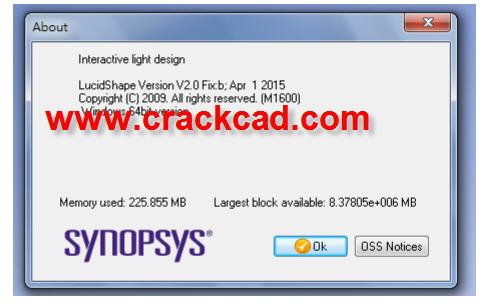Synopsys Introduces Innovative Visualization Capabilities in LucidShape for Automotive Lighting Design
LucidShape 2.0 Now Generally Available
Highlights:
The LucidShape Visualize Module provides photorealistic visualizations that help designers troubleshoot and improve automotive lighting designs at any stage in the development process
The Ray Data Viewer allows designers to preview vendor light sources before building model geometry
The Light Pipe Tool enables fast, robust creation of complete light pipe geometry
An expanded material library with measured BSDF data delivers unsurpassed accuracy for modeling automotive lighting surfaces
Synopsys, Inc. (Nasdaq: SNPS) today announced the availability of version 2.0 of its LucidShape® automotive lighting design software, which delivers a powerful new photorealistic visualization module for efficient performance evaluations early in the design cycle, as well as productivity-enhancing tools to enable faster, more accurate model creation. LucidShape 2.0 empowers automotive lighting engineers to develop, verify and deliver high-quality designs while reducing product development time.
Visualize Module
LucidShape's new Visualize Module delivers high-speed photorealistic images of an automotive lighting system's lit appearance, which demonstrate luminance effects when light sources in a model are illuminated. Because the Visualize Module depicts all interactions between system geometry and light sources, it provides designers with a physically correct diagnostic tool for evaluating how a lighting system will be perceived by the human eye. This is particularly important for evaluating automotive components such as turn signals and brake lights. The Visualize Module is a fast, reliable engineering tool that enables designers to perform design checks and make improvements early and often in the product development process.
The Visualize Module delivers these key capabilities:
Supports environment sources for the integration of 360-degree, high-dynamic range (HDR) photographic environments into photorealistic visualizations. Includes all physical and optical properties for an immersive, accurate rendering of a lighting scene.
Combines LucidShape's luminance camera and backward ray tracing to perform rapid, high-accuracy luminance calculations and generate photorealistic images at multiple angles and viewing directions.
Harnesses LucidShape's GPUtrace solution, which uses graphics processing unit (GPU) computing to accelerate illumination simulations by orders of magnitude compared to multithreading capabilities. The speed of the Visualize Module's simulations gives designers the flexibility to rapidly evaluate their models at any point in the design process.
"The Visualize Module is an indispensable part of our automotive lighting design process," said Richard Pacholski, lighting designer at Samvardhana Motherson Reflectec (SMR). "Our customers focus not only on optical performance, but also increasingly on the visual appearance of the illuminated product. With the Visualize Module, we can quickly and accurately simulate an illuminated product in a studio or outdoor environment and at various viewing angles, which is key because product appearance and illumination levels can change drastically at different viewpoints."
Ray Data Viewer
The Ray Data Viewer now provided with LucidShape creates illuminance images based on ray data sources. This allows designers to quickly preview the lit appearance and structure of vendor light sources before incorporating them into their models. Sources can be viewed from various angles using a camera positioning capability.
Light Pipe Tool
The new Light Pipe Tool simplifies and speeds the creation of complete light pipe designs by allowing prism bands, which model sheets of prismatic microstructures, to be created in conjunction with light pipe surfaces in LucidShape. With this tool, the light pipe surface is automatically fit to the prism band and merged into a single new shape, producing a seamless, optically accurate light guide.
Measured Bidirectional Scatter Distribution Function (BSDF) Surface Material Library
LucidShape's material library, which provides a wide array of surface material and bulk volume media, has been expanded to include measured BSDF models from Synopsys' LightTools® illumination design software. The new measured BSDF data delivers unsurpassed accuracy for modeling surface scattering for materials commonly used in automotive lighting and can be expanded and customized by designers according to their unique requirements.
Availability and Resources
LucidShape version 2.0 is available now. Customers with a current maintenance agreement can download this version from the Synopsys website using their SolvNet® account.



